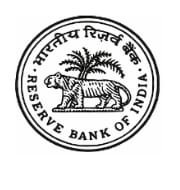RBI’s first bimonthly policy FY 2018-19: Policy rates unchanged
The Reserve Bank of India (RBI) in its first bimonthly policy review for financial year 2018-19 has decided to maintain status quo in policy rates by keeping repo rate unchanged at 6.0%. This decision was taken by RBI’s six member Monetary Policy Committee (MPC) headed by RBI Governor Urjit Patel.
Key Highlights of 1st Bi-monthly policy
The MPC in its first bimonthly policy review for FY 19 voted 5-1 in favour of leaving the Repo rate unchanged. It is fourth time in a row RBI has unchanged repo rate, the rate at which RBI lends funds to banks.
Inflation Projection: RBI has remained cautious on continuing inflation risks. The consumer inflation for FY19 was projected to 4.7-5.1% in the first half of FY19 and 4.4% in second half as against forecast of 5.1-5.6% and 4.5-4.6%, respectively, in the last policy review.
RBI has flagged concerns about absence of more clarity on minimum support prices, monsoon outturn, volatility of crude prices and impact of state government-led house rent allowance increases. Further, in case there is any further fiscal slippage from Budget Estimates for 2018-19 it could adversely impact outlook on inflation
Growth Projections: RBI shifted projecting GDP (gross domestic product) as against GVA (gross value added) growth earlier. It sees GDP growth strengthening to 7.4% in FY19 from 6.6% in FY18 with growth at 7.3-7.4% in the first half and 7.3-7.6% in second half with risks evenly balanced. It also suggested that output gap is closing but downside risks on global trade protectionism, market volatility and weak domestic public finances exists.
Policy Rates
Repo rate: It was unchanged at 6%. It is rate at which RBI lends to its clients generally against government securities.
Reverse Repo Rate: It was unchanged at 5.75%. It is rate at which banks lend funds to RBI.
Marginal Standing Facility (MSF) Rate: It was unchanged at 6.25%. It is rate at which scheduled banks can borrow funds overnight from RBI against government securities. It is very short term borrowing scheme for scheduled banks.
Bank Rate: It was unchanged at 6.25%. It is rate charged by central bank for lending funds to commercial banks. Higher bank rate will translate to higher lending rates by banks. It influences lending rates of commercial banks.
Cash Reserve Ratio (CRR): It was unchanged at 4%. It is amount of funds that banks have to keep with RBI. The RBI uses CRR to drain out excessive money from system.
Statutory Liquidity Ratio (SLR): It was unchanged at 19.5%. It is amount that banks have to maintain a stipulated proportion of their net demand and time liabilities (NDTL) in form of liquid assets like cash, gold and unencumbered securities, treasury bills, dated securities etc.
Month: Current Affairs - April, 2018


